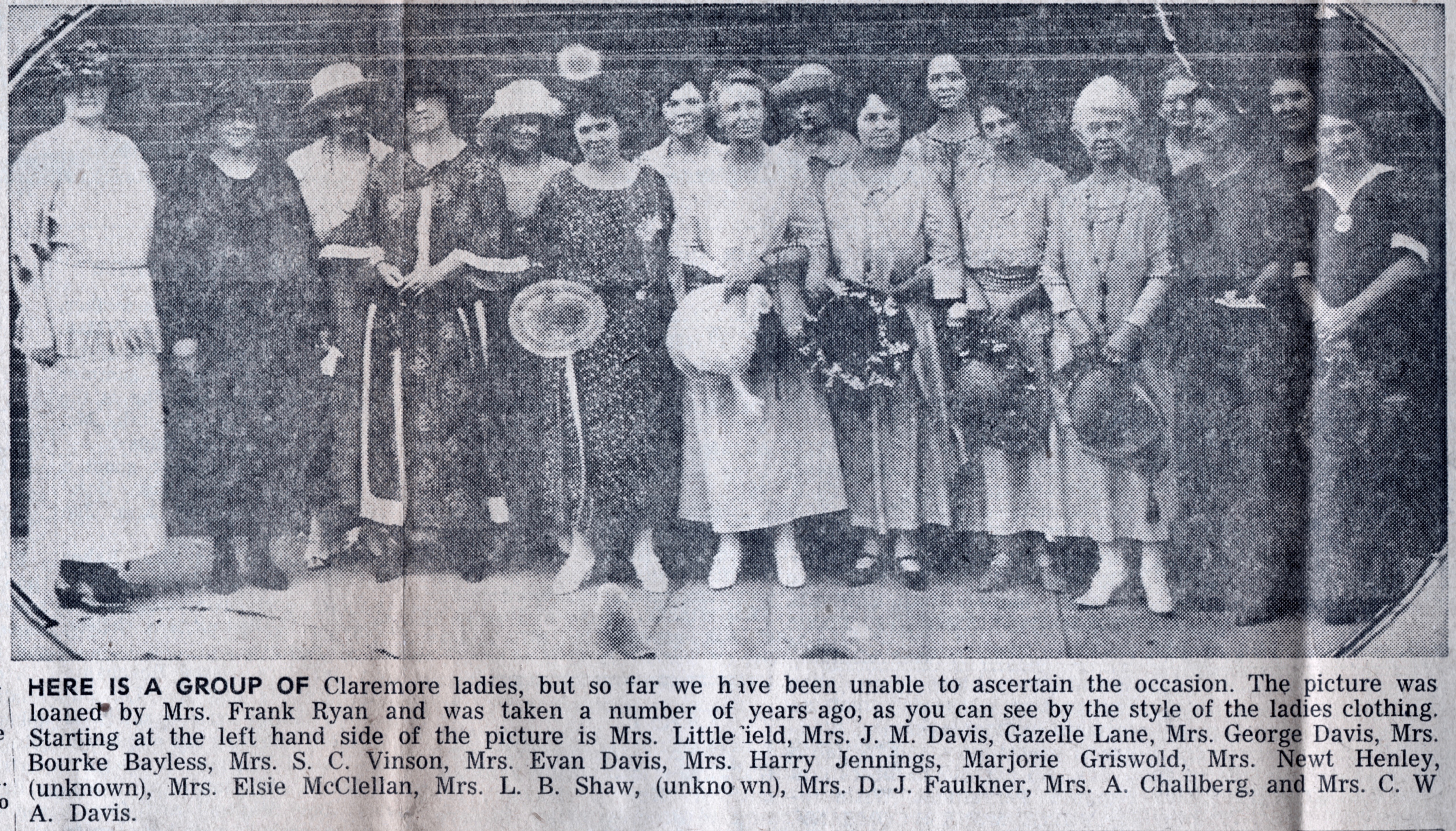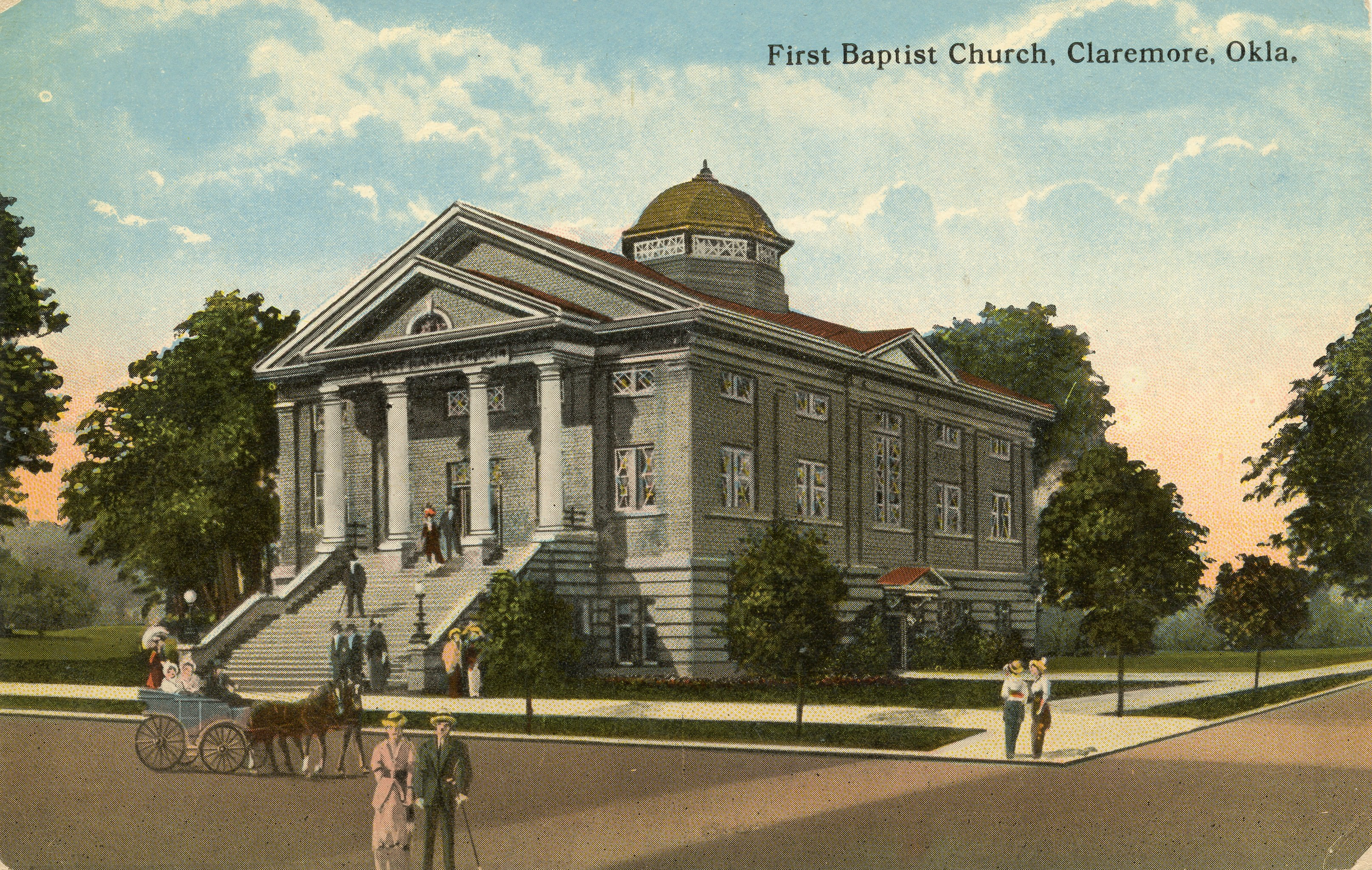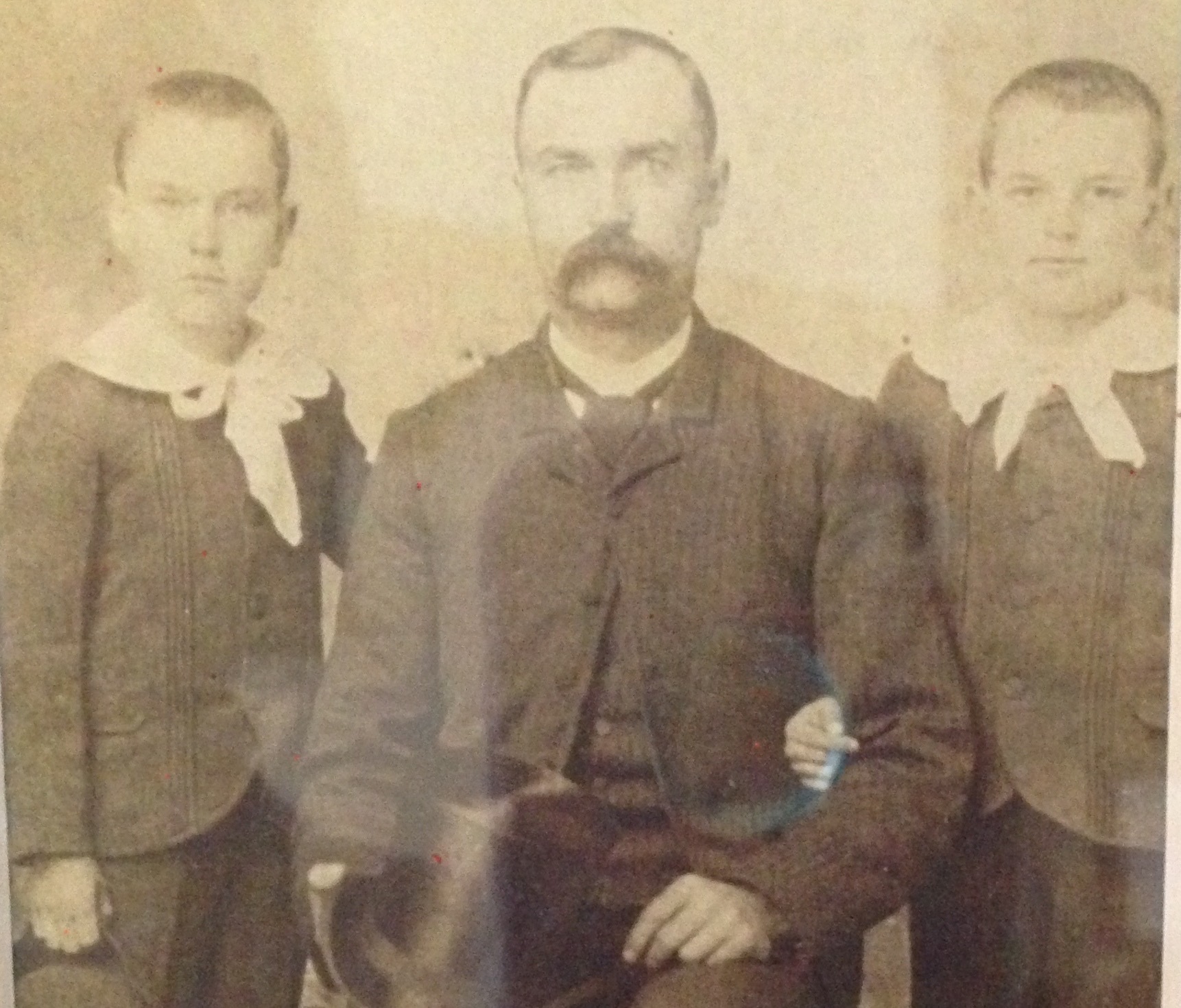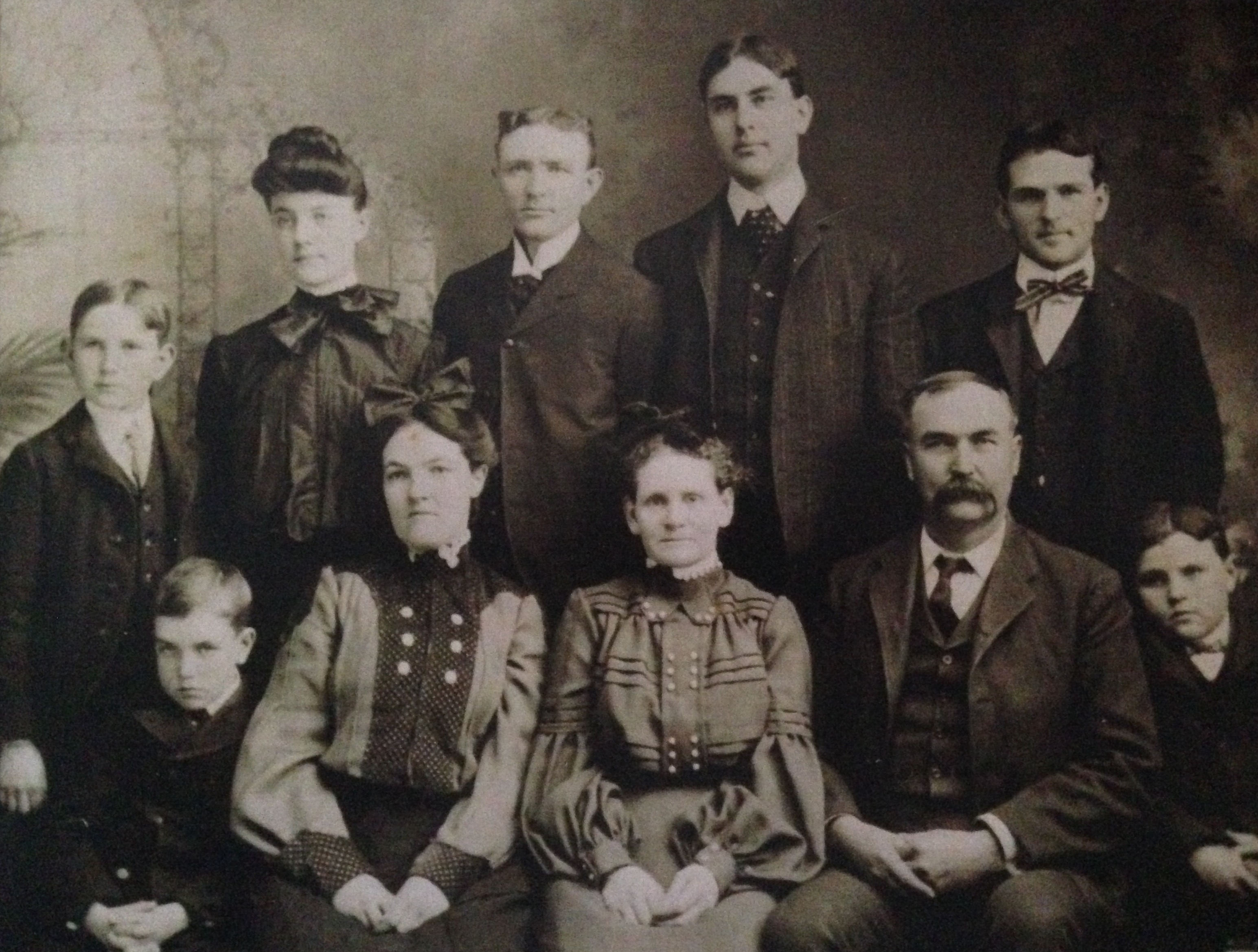REEL 6 – Claremore’s Movie Theater Magic – Claremore’s Lyrical Lyric (1909) and Electrifying Electric (1910) Theatres, Part 3
To start at the beginning to rewind and read “Claremore’s Movie Theater Magic” – Reel 1, Reel 2, Reel 3, Reel 4, or Reel 5 – please click the appropriate reel.

An Electric Theatre and Claremore highlight electrified the city in the spring of 1913, when local banker and eligible bachelor Earle Bayless had the honor of escorting Princess Stefania Kaunitz of Austria and her maid to the Electric Theatre for entertainment. Princess Stefania had come all the way from her homeland to improve her health by using Claremore’s renown and medicinal Radium Waters. “The princess proved to be a person of much interest, and during the show was the cynosure of nearly all the eyes of the people present, at some time or other. While the pictures were being shown, the princess raised her veil to get a better view, upon the raising of which those who saw her were surprised to note her face was, so far as one could see, not broken out with eczema, but of course the light was rather poor and we might have been mistaken… Those who witnessed the [February 25, 1913, Thanhouser released] two-reel feature, Sherlock Holmes Solves the Sign of Four, [starring Harry Benham and Charles Gunn] at the Electric Theatre Friday night, were unanimous in their expression that it was a masterpiece. Many of the people in the audience had read the story, which made it doubly interesting. Mr. Webber is to be complimented upon securing such a meritorious picture for his patrons.”[lxx]
Over at the Lyric, “A treat was enjoyed” in March 1913, “by the presentation of the [17-minute-long, D.W. Griffith] Biograph drama, The One She Loved, [starring Henry B. Walthall, Mary Pickford and Lionel Barrymore] which was good, as the pictures of this company always are. On account of the bad weather, not a very large crowd was in attendance, but those who were fortunate enough to see this picture were delighted.”[lxxi]
“Harry Martin, the genial manager of the Lyric Theatre, presented for the approval of his patrons,” in April 1913, “an excellent picture namely, The Twilight of Her Life, which was played by an all-star cast. The picture was in one reel, but those who saw the one reel wished that more was to follow. This picture was accompanied by two others of merit, and on the whole, the show was a dandy.”[lxxii]
“In acknowledgement of his appreciation of the liberal patronage which his picture show has been accorded by the people of Claremore, Harry Martin, manager of the Lyric Theatre, gave a carnation to each lady who passed into his theatre… This was rather a unique idea of Mr. Martin’s, and to say that it proved to be a winner would be putting it mildly. The program presented was especially good. Nowhere in Oklahoma, or any other state for that matter, can there be found any more up-to-date picture shows than right here in our home town.”[lxxiii]
One, two, or even three reel movies were becoming more common, but movie lengths were still considered “short” by today’s market; most were not more than half an hour.
Then Satan came to the Electric. “The great five-reel feature, Satan, which was shown at the Electric Theatre Saturday afternoon and night and Sunday afternoon and night, was absolutely the greatest picture of its kind that has ever been projected upon a screen in this town containing a moral throughout every foot of the picture. Not only was the acting of all the players who helped produce this masterpiece good, especially that of the man who played the part of the devil, but the scenic effect throughout the entire picture was superb.
“The opening scene showed Satan being thrown from heaven and his fall to earth. The first reel dealt with Satan doing evil on the earth in the days of Adam and Eve. The lesson of what happened to those who yield to the temptation of the devil was laid bare and brought home to the minds of all who witnessed the first reel as it was throughout the entire five, coming down step by step unto the present day, showing the devil always wielding an influence over men and women and finally bringing them to ruin, after which he would enjoy a hearty laugh.
“Such pictures are of unlimited value educationally and morally, for much was shown of the crucifixion of Christ. No one who saw this picture went away without giving some concentrated thought. It made one think.”[lxxiv] “The thief cometh not, but for to steal, and to kill, and to destroy: I [Jesus] am come that they might have life, and that they might have it more abundantly. John 10:10 KJV”
“A beautiful duet by the ever popular singers, Miss Lois Wiggins and brother, Lawrence, was the next number on the program,” in May 1913, “and to say that their number was pleasing would be putting it mildly. It scored a hit. These two young people are gifted with wonderful voices and the harmony which they draw from a song is especially pleasing to the ear. When it is announced that they will sing at the Lyric Theatre a good crowd is generally the result.”[lxxv]
Community fundraising events continued to be offered at the Lyric. One in May 1913, “was a benefit for the members of the Junior class of the E.U.P.S. [Eastern University Preparatory School at Claremore, now Rogers State University]. The Claremore Progress gave details. “Harry Martin, manager of the Lyric Theatre, gave a benefit show to the Junior class of the state school Friday night which was well attended and reflected credit upon Mr. Martin for his generosity. The juniors share of the proceeds from the benefit show given at the Lyric Theatre Friday night was $22.70. The money goes into the class treasury. The members of the class wish to publically thank Mr. Martin for his kindness.”[lxxvi]
“The two-reel feature, The Kings of the Forests,” shown at the Lyric Theatre, “was an excellent picture in every respect, and was well attended. Several line parties were in evidence… Misses Maude Littlefield, class mother of the Senior class of the E.U.P.S., and Miss Brooks, mother of the Junior, entertained the Junior class, some thirty in number, at Hall & Gilkerson’s Drug Store, Thursday evening, first having enjoyed a line party at the Lyric Theatre.”[lxxvii]
The Lyric Theatre also “gave a benefit show for the Episcopal church… which was well attended. The programme shown was interesting and held the attention of the audience from beginning to end.”[lxxviii]
“Mrs. Wiggins, the efficient piano player at the Lyric Theatre,” was “placed in charge of the same during the absentee of H.M. Martin” that July.[lxxix] This was also the month the Lyric Theater was robbed! “Have you seen anyone spending a whole lot of nickels? If you have just let us know for we will then have the criminal. On Thursday night, Harry Martin left money in the money drawer at the Lyric Theatre to the amount of $1.55 all in nickels, little thinking that a thief would commit a theft for so small an amount, but upon his return to the theatre Friday morning, he found that such had been the case, the nickels were all gone. The thief had cut the screen through which the admission fee is passed and from the vantage point of having his arm inside had relieved the till of the change. As yet, no trace has been found as to who is the guilty party. It is hoped that the thief is found and punished as a lesson not to do childish things again. Whoever did this is a dangerous criminal. Why he may even rob a baby’s bank the next time.”[lxxx]
Line parties continued to be a rage in the summer of 1913. “Miss Winnifred Jennings entertained a few of her girlfriends with a line party to the Lyric Wednesday evening followed by a bunking party at the home of her parents. It is needless to say that the girls had a grand time… And Mrs. A.L. Kates entertained a few young folk at her residence on Second street, Tuesday evening, with a seven o’clock dinner, after which a line party to the Electric Theatre was enjoyed, followed by liquid refreshments at the Hall-Gilkeson Drug Co. The guests of honor were Misses Dorothy Davenport, of Vinita, Alleene McClure, of Springfield, Mo., and Lois Chandler, of Cassville, Mo. A good time in general was had.”[lxxxi]
And a number of “Little Tots Have Bunking Party. Little Eloise Bishop, daughter of Mr. and Mrs. J.W. Bishop, gave a slumber party to a few of her little friends last week at the home of her parents. Mrs. Bishop, assisted by Byna Murphy and Mrs. J.C. Lipe, served the guests with a picnic luncheon on the lawn, after which a line party was indulged in at the Electric Theatre. Those to accept Little Miss Bishop’s hospitality were Lillian Adams, Margaret Adams, Ruth Flippin, Rebecca Flippin, Charlotte Payne, Fleta Davis, Muriel Lipe and Miss Thelma Bishop. All report a good time.”[lxxxii]
In August 1913, Charlie Church officiated “in the capacity of operator at the Lyric Theatre, during the absence of Roy Wilson, the regular operator, who” spent “his vacation in Missouri visiting homefolk.”[lxxxiii]
Also that August a plea was made to support the Boy Scouts through a “Scouts Benefit. Billy Webber, owner of the Electric Theatre, gave the Boy Scouts a benefit Friday night and the boys cleared $7 after all of the expenses had been paid. Come business men and get in line and help the Scouts as Mr. Webber and Mr. O’Neil have started the ball rolling, so come on and help the Scouts out as they have reorganized under a new scoutmaster and promise to do some good work with the help of the business men.”[lxxxiv]
August 1913, “perhaps for the first time in the history of the city a boy scout baseball team matched a similar visiting team on the local diamond. It was a return game and the Wagoner boys came up on the morning train, twenty-seven strong… After the game, a large number of the boys went to the swimming pool for a plunge, and this was followed by a benefit picture show at the Lyric Theatre… Harry Martin gave a benefit show for the boy scouts at the Lyric… The money derived from the show was used to help defray the expenses of the Wagoner baseball team’s trip to this city.” A card of appreciation on behalf of the Claremore boy scouts, was published in The Claremore Progress. “I wish to publically thank the owners and managers of the Electric Theatre, the Lyric Theatre, and the Swimming Pool for the benefits given the Boy Scouts, John Barrett for the use of his car Friday, and the business men and the different homes for the courtesies shown our visitors from Wagoner. D. Ferrara, Scoutmaster.”[lxxxv]
The Claremore Progress affirmed, ”To a crowded house throughout the entire evening Saturday, the Electric Theatre showed that great photo-play, Tannhauser, by the famous Thanhouser Company, in three parts, which was by far the most superbly staged and well-acted motion picture feature ever shown in Claremore. Not only was the scenery most elaborate but the ‘Violets’ and ‘My Cabaret,’ sung by Miss Link, pleased the large audience. Costumes were par-excellence. Mr. Webber, the manager of this popular show house, is endeavoring to secure the finest programs obtainable, and it is due to the showing of such features as Tannhauser that he owes the liberal patronage his theatre is enjoying.”[lxxxvi] By September, “Lee Pitts, former operator at the Olympic Theatre of Oklahoma City [had] accepted a position as operator at the Electric Theatre.”[lxxxvii]
Excellent motion picture programs continued to be shown at the Lyric Theatre. “A well-acted Biograph drama, The Hero of Little Italy, was especially interesting, as was also The School Principle [or Principal?], by the Lubin Co., When Dreams Come True and One Can’t Always Tell, completing the evening program, were well received. The Lyric Trio, singing ‘Baby Rose, My Moonlight Pal,’ was enjoyed by all, the selection being rendered in their usually pleasing manner. Mr. Martin, the manager, enjoyed a most liberal patronage during the evening, the verdict of all being an excellent and interesting program.”[lxxxviii]
Claremore’s movie houses continued with benefit events. The benefit at the Lyric “for the Odd Fellows Orphanage was one of the most liberally patronized ever given in the city. The theatre was crowded from beginning to end of the program.”[lxxxix] “The Electric Theatre put on a benefit for the Junior class of the Prep school, and by hard work the students had sold tickets to about everyone in town, which with the Lyric and the Opera House also running, gave amusement for all.”[xc] The Electric Theatre will give a benefit tonight for the Royal Neighbors lodge.[xci]
The movie theatre business was booming; it was time for expansion in December 1913. Harry Martin, manager of the Lyric Theatre, told the editor of The Claremore Progress, “that while in Collinsville he purchased the Royal Theatre at that place. He says that he has remodeled the place and made it look like new. He has changed the name of the place of amusement to the Lyric. He says that he kept the doors open only three days last week and that he enjoyed a nice business at the hands of the Collinsville people and that the prospects are very bright for a successful business at that place. [Harry Martin’s son] Victor Martin will take charge of the new show at Collinsville, and as Victor is a bright energetic fellow, who is willing to work, he may well be expected to make a success of his new undertaking”.[xcii] Victor Martin moved to “Collinsville to take charge of the Lyric Theatre.”[xciii]
To close 1913, the two-reel Vitagraph feature, The Test, starring Clara Kimball Young and Herbert Barry played at the Lyric Theatre in Claremore, and “was one of the best pictures… seen for some time. It was a society drama, part of the second scene being laid in Australia.”[xciv]
With fierce commercial competition continuing between the Electric and Lyric, the movie paying public would “test” which theatre provided the best movie theatre magic. But, could the Claremore community continue to provide enough patronage for the two competing movie houses to survive?
By Christa Rice, Claremore History Explorer
Coming Attractions Coming Soon: Reel 7- Claremore’s Movie Theater Magic.
Sources:
Oklahoma newspapers sourced through The Gateway to Oklahoma History, https://gateway.okhistory.org; crediting Oklahoma Historical Society.
[lxx] Claremore Progress. And Rogers County Democrat (Claremore, Okla.), Vol. 21, No. 11, Ed. 1 Friday, April 11, 1913.
The Inola Register. (Inola, Okla.), Vol. 7, No. 29, Ed. 1 Thursday, February 27, 1913.
https://www.themoviedb.org/movie/787307-sherlock-holmes-solves-the-sign-of-the-four?language=en-US
[lxxi] Claremore Progress. And Rogers County Democrat (Claremore, Okla.), Vol. 21, No. 9, Ed. 1 Friday, March 28, 1913.
https://en.wikipedia.org/wiki/The_One_She_Loved
[lxxii] Claremore Progress. And Rogers County Democrat (Claremore, Okla.), Vol. 21, No. 11, Ed. 1 Friday, April 11, 1913.
[lxxiii] Claremore Progress. And Rogers County Democrat (Claremore, Okla.), Vol. 21, No. 12, Ed. 1 Friday, April 18, 1913.
[lxxiv] Claremore Progress. And Rogers County Democrat (Claremore, Okla.), Vol. 21, No. 14, Ed. 1 Friday, May 2, 1913.
[lxxv] Claremore Progress. And Rogers County Democrat (Claremore, Okla.), Vol. 21, No. 16, Ed. 1 Friday, May 16, 1913.
[lxxvi] Claremore Progress. And Rogers County Democrat (Claremore, Okla.), Vol. 21, No. 17, Ed. 1 Friday, May 23, 1913.
[lxxvii] Claremore Progress. And Rogers County Democrat (Claremore, Okla.), Vol. 21, No. 18, Ed. 1 Friday, May 30, 1913.
[lxxviii] Claremore Progress. And Rogers County Democrat (Claremore, Okla.), Vol. 21, No. 23, Ed. 1 Friday, July 4, 1913.
[lxxix] Claremore Progress. And Rogers County Democrat (Claremore, Okla.), Vol. 21, No. 24, Ed. 1 Friday, July 11, 1913.
[lxxx] Claremore Progress. And Rogers County Democrat (Claremore, Okla.), Vol. 21, No. 25, Ed. 1 Friday, July 18, 1913.
[lxxxi] Claremore Progress. And Rogers County Democrat (Claremore, Okla.), Vol. 21, No. 26, Ed. 1 Friday, July 25, 1913.
[lxxxii] Claremore Progress. And Rogers County Democrat (Claremore, Okla.), Vol. 21, No. 27, Ed. 1 Friday, August 1, 1913.
[lxxxiii] Claremore Progress. And Rogers County Democrat (Claremore, Okla.), Vol. 21, No. 27, Ed. 1 Friday, August 1, 1913.
[lxxxiv] Claremore Progress. And Rogers County Democrat (Claremore, Okla.), Vol. 21, No. 29, Ed. 1 Friday, August 15, 1913.
[lxxxv] Claremore Progress. And Rogers County Democrat (Claremore, Okla.), Vol. 21, No. 30, Ed. 1 Friday, August 22, 1913.
[lxxxvi] Claremore Progress. And Rogers County Democrat (Claremore, Okla.), Vol. 21, No. 30, Ed. 1 Friday, August 22, 1913.
[lxxxvii] Claremore Progress. And Rogers County Democrat (Claremore, Okla.), Vol. 21, No. 34, Ed. 1 Friday, September 19, 1913.
[lxxxviii] Claremore Progress. And Rogers County Democrat (Claremore, Okla.), Vol. 21, No. 30, Ed. 1 Friday, August 22, 1913.
[lxxxix] Claremore Messenger. (Claremore, Okla.), Vol. 18, No. 39, Ed. 1 Friday, August 29, 1913.
[xc] Claremore Messenger. (Claremore, Okla.), Vol. 18, No. 45, Ed. 1 Friday, October 10, 1913.
[xci] Claremore Messenger. (Claremore, Okla.), Vol. 18, No. 52, Ed. 1 Friday, November 28, 1913.
[xcii] Claremore Progress. And Rogers County Democrat (Claremore, Okla.), Vol. 21, No. 44, Ed. 1 Friday, December 5, 1913.
[xciii] Claremore Messenger. (Claremore, Okla.), Vol. 19, No. 2, Ed. 1 Friday, December 12, 1913.
[xciv] Claremore Progress. And Rogers County Democrat (Claremore, Okla.), Vol. 21, No. 46, Ed. 1 Friday, December 19, 1913.











You must be logged in to post a comment.